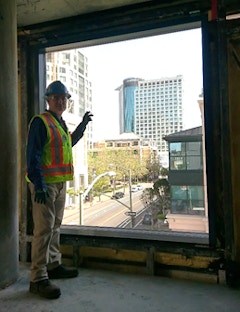
Performance-based Facade Framework
Buildings have a considerable impact on the environment, and it is crucial to consider environmental and energy performance in building design.

Buildings have a considerable impact on the environment, and it is crucial to consider environmental and energy performance in building design.
The construction industry is one of the greatest sources of pollution, where 39% of global energy-related carbon emissions are attributed to

Envelope-for-Service (E4S) is a novel business model developed with the aim of converting the building façade from a traditionally traded good to a

Today, building facades are expected to do much more than merely provide shelter, which is driving the need for higher performing envelope solutions.

Life cycle assessment was introduced in the 1970s as an analytical tool to quantify the environmental impact of a product, process, or service.


With an ever-growing interest in mid- and high-rise mass timber construction, this paper highlights the insights and lessons learned across global

Buildings account for over 40% of global emissions (GlobalABC, 2018). Growing populations and higher standards of living are increasing pressure on
In 2023, the International Sustainability Standards Board (ISSB) inaugurated the first two global sustainability disclosure standards IFRS S1/S2 to


The recently completed Capital One Hall performing arts center located in the Washington DC metro area is defined by a pleated exterior of glass and


Resiliency is the capacity of a building (or building component in the case of the facade) to support building functionalities during extreme events

The building envelope is at the intersection of embodied and operational emissions. Curtain wall specifically could play an important role in

Reducing greenhouse gas emissions from the building sector is critical to limiting global temperature rise to less than 1.5⁰C. Construction and